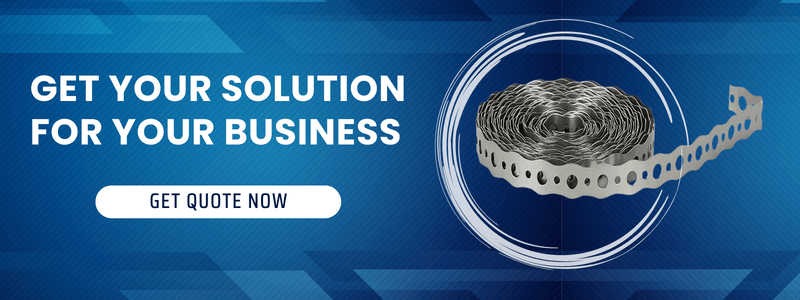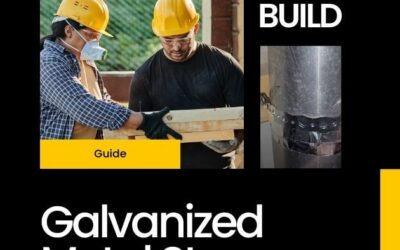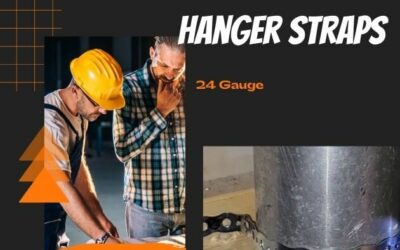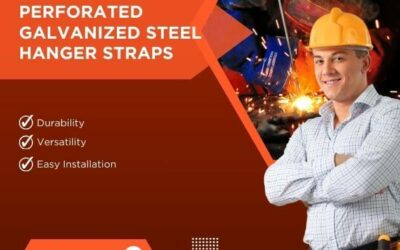Steel strapping is an incredibly useful and versatile product that has a wide range of applications. From securing heavy loads on pallets and trucks to bundling items together for easier handling, steel straps provide a sturdy and reliable fastening solution. If you’re looking for steel strapping near me, consider factors such as thickness, grade, and coatings before making a purchase. In this comprehensive guide, we will walk you through the key factors to consider when selecting steel straps so that you can find the perfect product for your purposes.
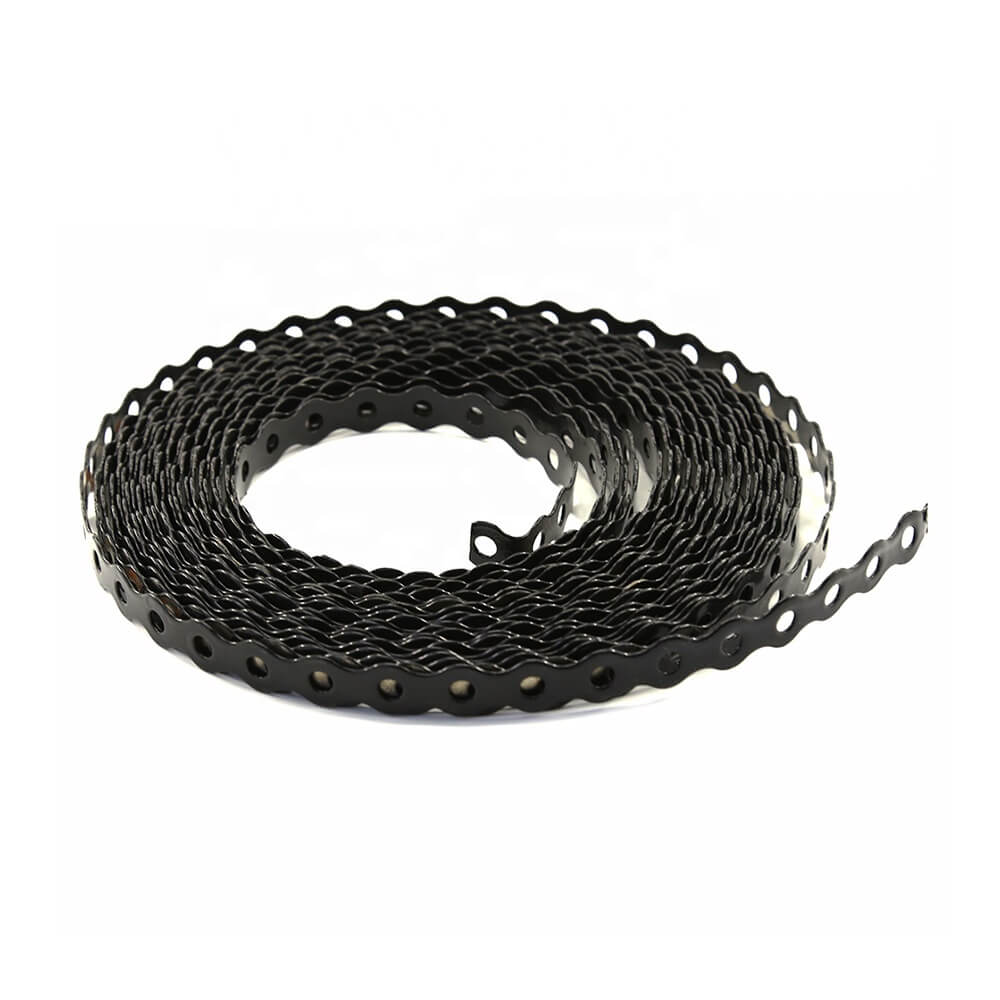
What is steel strapping and what is it used for?
Before delving into the different types and specifications, let’s first understand exactly what steel strapping is and why it is useful. Steel strapping, also known as steel strap, consists of thin strips of steel that have been formed into long straps. Some businesses might prefer using a steel strapping kit or a steel strapping machine for convenience. The steel is often coated, painted, or galvanized to prevent corrosion, with certain products being available at home depot steel strapping or steel strapping lowe’s. Steel straps are applied over items or bundles and then tightly fastened in place using steel seals and tensioning tools. This allows the straps to firmly secure the load in question.
Steel strapping provides tension and compression to stabilize loads in various settings. Key applications include:
- Palletizing – Steel strapping for heavy-duty packaging is wrapped around a loaded pallet in an intersecting and overlapping X-pattern to securely contain the load during transport and shipping. The tension in the straps keeps everything tight and compact.
- Bundling – Multiple items can be bunched or bundled together using steel strapping band for easier handling and organization. This helps when having to store or transport large numbers of objects.
- Load securing – Trucks use steel strapping, particularly heavy duty steel strapping over their loads as an additional securing method to prevent shifting during transit. The tight straps lock everything firmly in place.
- Reinforcing – High tensile steel strapping for industrial use can serve as an effective strengthening and reinforcing material when applied to weak or compromised structures. It provides increased stability.
No other fastening method provides the same combination of strength, adjustability, and cost-effectiveness that steel strapping does. Now let’s look at the key considerations when selecting straps for your purpose.
Important factors when choosing steel strapping
There are several important criteria to factor in when deciding which type of steel strapping is best suited to your particular application and load requirements:
Steel thickness and width
The thickness and width of the steel strap directly impact its strength and load capacity. Thicker and wider strapping is able to handle heavier loads without stretching, deforming or breaking. Common thicknesses range from 0.025 inches up to 0.079 inches. Widths range from 5/8 inch to 1-1/4 inches. Match the dimensions to your load’s size and weight requirements. Using undersized strapping can be outright dangerous.
Choose the thickness and width that align with your requirements, understanding that customized steel strapping solutions for businesses are available.
Steel grade
Steel strapping is available in different steel grades, which indicates the hardness, tensile strength and yield strength of the metal. The most common grades used are:
- Regular Carbon Steel (Grades 1 & 2) – The most economical option but only recommended for light duty applications. It has limited strength and a tendency to stretch.
- High Tensile Steel (Grades 3 & 4) – Much stronger and resistant to stretching. Recommended for medium to heavy duty strapping uses where high strength is needed.
- Alloy/Stainless Steel (Grades 5+) – Premium steel alloys with very high strength and corrosion resistance but also the most expensive. Typically overkill for most purposes.
Matching the grade to the load weight helps avoid strap failures while not overspending on needlessly costly alloys.
Understand the steel grades available and match them to your needs, considering options like corrosion-resistant steel strapping solutions and sustainable steel strapping manufacturing process.
Coatings
Unprotected steel strapping will quickly rust and corrode when exposed to moisture or weather. Various coatings are applied to provide extra environmental protection:
- Zinc coated – Also called galvanized, it offers basic corrosion protection at a low cost. The zinc protects any nicks or abrasions.
- Wax coated – Wax coatings provide good moisture resistance indoors or when sealed in packaging. Not suitable for outdoor use.
- PVC coated – A plastic PVC coating gives excellent protection against moisture and abrasion damage. Ideal for outdoor loads.
Consider your environment and use pattern when deciding on the coating. The goal is to avoid rust and maintain strap integrity.
Select coatings based on the environment, with options like galvanized steel strapping for outdoor applications.
Brand reputation
There can be considerable differences in quality between discount bargain steel strapping and premium branded products. Poorer grades may be prone to failing, deforming, or breaking. Stick with reputable high volume industrial brands like Signode and Samuel Strapping to ensure reliability. The extra cost is worth it to avoid product failures.
While there can be differences in quality, remember to stick with reputable brands. Also, consider factors like steel strapping safety procedures and guidelines to ensure the safety of your operations.
Specialized options
Certain applications call for steel strapping with unique properties:
- Preformed coil strapping – Comes pre-curled in coils for securing pipe, tubing, metal rolls, and other cylindrical items. Eliminates bending work.
- Double notch seals – Special seal design creates two notches instead of one for extra holding strength and reduced slack.
- Safety edges – Rounded or indented edges that reduce risk of the strap cutting or scratching workers and cargo. Safer to handle.
- Custom seal messages – Imprinted messages like “Inspected” help track sealed loads.
Consider any scenarios where these specialty options would be beneficial for your purposes. The standard rectangular strapping is not always optimal.
Now that we have covered the key factors to consider when selecting steel strapping, let’s look at how to actually determine how much you need for a project.
How much steel strapping do you need?
To determine how much strapping is required for a load, you need to calculate the total linear feet of coverage based on the number of horizontal bands and vertical bands needed. Here are the basic steps:
1. Measure the width and length of the load to get its total surface area. For a pallet, measure the total perimeter.
2. Decide on spacing between strap bands. Closer spacing provides more securing power. A general rule is spacing of 2 ft for heavy loads, 3 ft for medium loads, and 4 ft for light loads.
3. Calculate the number of horizontal and vertical bands needed based on the load dimensions and chosen spacing. Round up fractional bands to the nearest whole number.
4. Determine the required length for each band. Add 1 ft to the load dimension the strap will cover to allow for tensioning and sealing.
5. Multiply the number of bands by their length to calculate the total linear footage needed. Order more rather than less for contingency.
Don’t forget to account for any specialty securing patterns like edge corner protectors which use extra strapping. Also factor in radiation doses when contamination in warehouse or nuclear inventory with hazardous environments. Overestimating slightly is wise to avoid being short on delivery day.
Proper steel strapping selection and calculations results in optimal load containment without any surprises.
Applying and tensioning steel strapping
Once you have the right steel strapping product and required quantity for your application, it needs to be correctly installed to work effectively. Here is an overview of best practices for strap application and tensioning:
- Wear thick work gloves to protect your hands when handling the sharp, cut metal edges of strapping. Also wear eye protection.
- Position the strapping evenly across the load surface, orienting the bands perpendicular to each other. Arrange the steel straps so that they cross in an overlapping X-pattern.
- Use a strapping tensioner tool to pull each strap tight until the ratchet clicks, which engages the tensioning mechanism. Avoid overtightening to the point of bending or crimping the strap edges.
- Seal the strap using a notcher and sealer tool to crimp the seal around the strap ends. Ensure the seal is fully compressed with no gaps.
- Once the load is fully strapped vertically and horizontally, give each strap a final cinching to redistribute tension evenly. The straps should all have uniform tautness with the sealed joints centered on the load sides.
- When cutting off excess strap length, leave at least 12 inches remaining to allow for grip and safety. Never leave sharp exposed strap edges.
- Inspect periodically enroute and adjust any loosening straps as needed to maintain a tight and secure load. Look for damaged or broken straps requiring replacement.
Proper training on strapping techniques plus using the right tensioning and sealing tools prevents safety issues and containment failures that could result in damage, injuries and legal liability. Don’t cut corners on load integrity.
In summary, securing your loads with quality steel strapping involves:
- Selecting the right strap thickness, grade, and coating to match your load weight and environment
- Calculating the total quantity needed based on band spacing and dimensions
- Applying an intersecting X-pattern band arrangement across the load
- Tensioning each strap until taut using a ratchet puller
- Notching and sealing the strap ends together to complete the loop
- Confirming all straps have consistent tension and centrally aligned seals
- Retightening periodically enroute to compensate for any settling
Follow these guidelines and any cargo you steel strap together will arrive safely and securely at its destination. Steel strapping truly is an indispensible product for efficient transport and materials handling when having the proper steel strapping tools makes a major difference in the ease, efficiency, and quality of application. Investing in professional grade tools prevents frustration and inconsistent results. Here are some of the most essential steel strapping tools to include in your toolkit:
Strapping dispenser – Allows controlled payout of the steel strapping so it can be maneuvered around the load without tangling or kinking. Can be manual crank or electric operated.
Sealless combination tool – Provides both tensioning and sealing in one tool. Ratchets to tighten strap, then notches/seals the joint. Quicker process.
Battery powered strapping tool – Highly efficient and convenient cordless electric version for frequent heavy duty strapping work. Removes hand fatigue.
Cutters – Used to trim off excess strap safely after joint is sealed. Prevents dangerous exposed edges.
Corner protectors – Plastic or carboard pieces that cushion strap pressure points on cargo edges and corners to prevent damage.
Gloves & goggles – Necessary personal protective equipment when handling sharp-edged strapping and tools. Reduces injuries.
Tension scale – Optional digital gauge to monitor strap tensioning force as ratcheted. Ensures consistency across straps.
Hook knives – Special blades to safely cut steel strapping in case of emergency load issues or the need to re-secure.
Having back-ups of key tools allows work continuity if something breaks or malfunctions on the job. Maintain and store all tools properly as well. Your strapping tools are a long-term investment in reliable load control.
Safety considerations for steel strapping
While steel strapping delivers outstanding load stabilization and security, the inherent sharpness and tension hazards require adherence to important safety measures:
- Wear thick cut-resistant gloves when handling strapping to avoid severe lacerations from the steel edges and corners. Also wear eye protection in case bands snap.
- Keep your face, head, and body out of alignment with the strap tensioner and seal crimper to avoid injuries if a strap breaks or tool slips.
- Avoid standing directly beside or underneath high-tension steel strapping to reduce risk of injuries if the band suddenly breaks or loosened load items fall.
- Use rounded edge strapping and edge/corner protectors whenever possible to reduce contact risks.
- Leave at least 12 inches of strap length after sealing to prevent exposed sharp edges that could cause cuts.
- Monitor strap conditions closely enroute. Replace severely frayed, nicked, bent or otherwise compromised strapping immediately to prevent failures.
- Train all staff thoroughly on proper tools usage, strap inspection, safety disciplines, and emergency response in the event of an accident.
Staying vigilant and focused on safety will keep both personnel and cargo free of harm when dealing with the forces involved in steel strapping.
In closing, steel strapping delivers unmatched durability, security, and cost-efficiency for stabilizing loads during transport and storage. Following the guidance in this article on strapping selection, quantity calculation, proper application techniques, tools, and safety will ensure your steel strapping meets your bundling, palletizing and load securing needs while reducing the risk of product or personal damage. Be sure to select a strap width, thickness, steel grade, and coating engineered to match your specific loads. Invest in quality strapping and tools upfront to avoid failures down the road. And above all, make safety a priority to avoid injuries when working with tensioned steel. With the right strapping approach, you can leverage this incredibly versatile product to make handling all of your transport loads easy, safe and secure.
Secure Your Pipes with Galvanized Metal Straps: A Comprehensive Guide
Ensuring Pipe Stability and Longevity In the world of construction and plumbing, maintaining the structural integrity of piping systems is paramount. Galvanized metal pipe straps emerge as the unsung heroes, providing unwavering support and security to these vital...
Mastering 24 Gauge Galvanized Pipe Hanger Straps: A Useful Guide
In the realm of plumbing and construction, where every detail matters, securing pipes effectively is paramount. Enter the 24 gauge galvanized pipe hanger strap – a reliable and versatile solution trusted by both professionals and DIY enthusiasts alike. Understanding...
Perforated Metal Hanger Straps: Installation, Benefits, and Maintenance
Are you tired of dealing with sagging ductwork or unsupported pipes in your home or commercial building? Proper support is crucial for maintaining the integrity and efficiency of your HVAC and plumbing systems. That's where perforated metal hanger straps come into...

Justin Wong
Hi, I’m Justin, the technical engineer of Jiangmen Masters. We’ve been running a factory in China that makes metal hanger strap for 16 years now, and the purpose of this article is to share the knowledge related to metal hanger strap from a Chinese supplier’s perspective.

